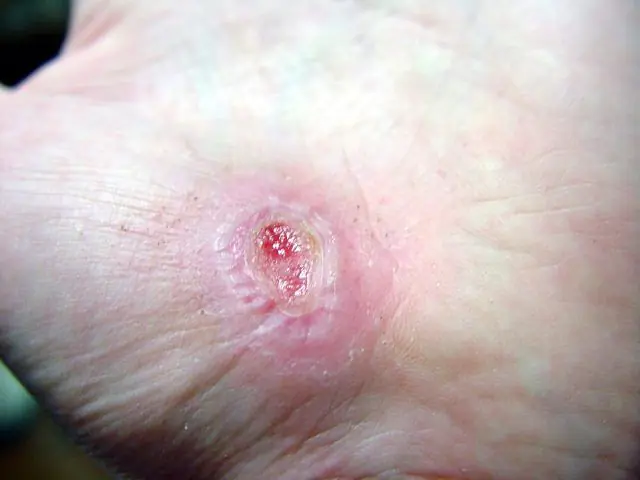
- What does the skin look like after papilloma removal?
- Why doesn't the wound heal?
- What to do if the wound does not heal after removing the papilloma
- Prevention of complications
Removing papillomas is a necessary step towards healthy skin. Destruction can be performed at the insistence of the patient, or may be a medical necessity. However, we should not forget that after the operation serious care and a long recovery process will be required. If the wound does not heal after removing the papilloma, it is necessary to understand the reasons for this phenomenon and take action. Ignoring the problem can lead to the formation of scars or even the appearance of new growths. The results of destruction will be leveled out. To prevent this from happening, you need to know how the wound should heal properly after removal of the papilloma, why failures in regeneration are possible, how to help the body recover faster and prevent complications.
What does the skin look like after papilloma removal?
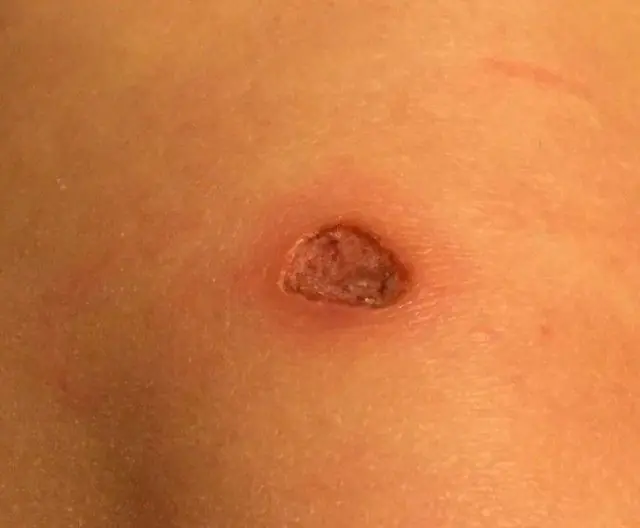
The photo shows a wound after papilloma removal
After removing a papilloma, even using the most modern methods of laser and radio wave surgery, a mark will remain on the skin - tissue damage. The larger the formation removed, the deeper the destructive influence.
The wound after surgery looks like a small funnel, its depth and diameter vary in each specific situation. In rare cases, the formation affects only the top layer of skin - the epidermis. As a rule, after removal, the wound does not heal and becomes wet, since the integrity of not only the epidermis, but also the deep layer of the skin - the dermis is damaged.
The process of wound formation and its subsequent healing can be divided into several stages:
- Removal of papilloma and formation of a wound on the operated area;
- The formation of a scab is the drying out of the wound and the growth of a dense crust on top;
- Formation of new tissue under the crust;
- The scab falls off, leaving behind young pinkish skin.
Normally, after destruction, the skin may turn red and swell, but this condition will last no more than a day. Then, if proper care is provided, the wound heals completely until young skin forms in 2-4 weeks. However, violation of the integrity of the skin during the operation also leads to a violation of its main function - protective. There may be cases when the wound does not heal after papilloma for a number of reasons.
- Read also what the wound looks like after removing a wart with nitrogen
Why does the wound not heal after papilloma removal?
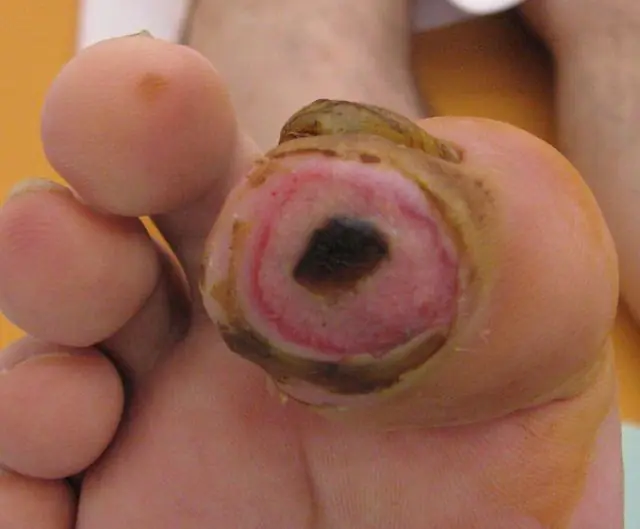
Photo of an infected wound after papilloma removal
If, after removal of papillomas, the wounds do not heal within the specified time frame or the process has slowed down significantly at the stage of crust formation, it is necessary to identify and eliminate the cause of such a violation. The main factors affecting healing include infection of the wound and the subsequent development of the inflammatory process, as well as improper postoperative treatment.
When the papilloma is removed in a medical facility by specialists, the likelihood of infection is significantly reduced. And if the destruction was carried out using a laser, then a situation where the wound after papilloma does not heal due to infection is almost impossible.
Most often, the reason that the wound does not heal is improper care, violation of medical instructions, or the use of additional remedies that actually only worsen the situation. Thus, after removal of a papilloma, the wound does not heal and most often gets wet, because, contrary to recommendations, the patient covers the site of destruction with a plaster. Synthetic fibers do not allow the skin to “breathe” and prevent the formation of crusts. Also, you should not keep the wound in water, and if this does happen, you should dry the skin area thoroughly.
At home, you need to ensure that the operated area does not get:
- decorative cosmetics, for example, foundations, which women often use to hide the site of destruction;
- alcohol-containing cosmetic formulations, such as tonics and lotions;
- abrasive materials - the skin near the wound should not be treated with scrubs, washcloths, or pumice.
The use of creams based on glucocorticoids also worsens the regenerative properties of the skin and leads to the fact that after removal of the papilloma the wound does not heal, that is, it is necessary to carefully check the drugs used by the patient. It is best to use only those products prescribed by the doctor.
In rare cases, the cause of the wound not healing is an allergy to the antiseptic. If, despite following all medical instructions, the wound does not heal or becomes wet, you must consult a doctor as soon as possible and begin new treatment.
Note! It often happens that the wound is already beginning to heal and even a scab, the so-called crust, is formed. Wanting to quickly get rid of the dense layer, the patient independently rips off this crust, which is strictly forbidden to do. Such actions can lead to secondary infection of the site of destruction and the fact that the wound will not heal for a long time after papilloma.- Read also why the wound does not heal after wart removal
What to do if the wound does not heal after removing the papilloma?
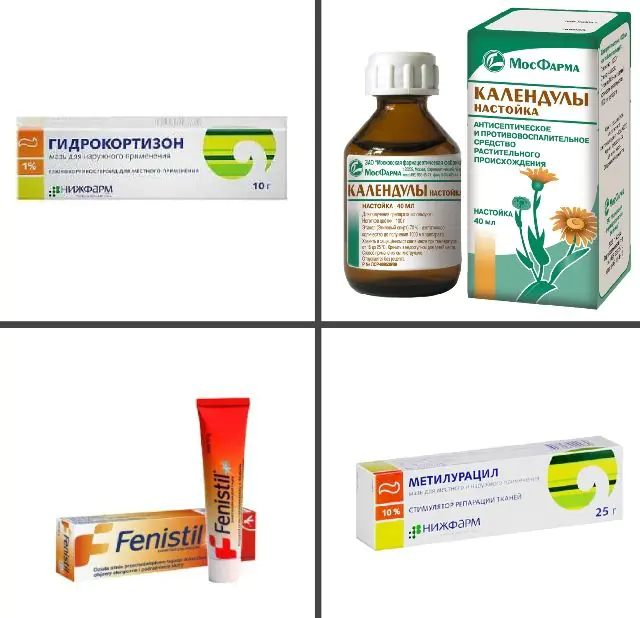
The photo shows preparations for treating wounds after removal of papillomas
If the situation where, after removing the papilloma, the wound does not heal and gets wet, it was still not possible to avoid, the first thing that needs to be done is to eliminate the causes that cause negative consequences. Next, you need to consult a doctor and, strictly following his recommendations, treat the wound. Treatment includes proper sanitary and hygienic procedures, as well as the use of special wound healing agents.
Postoperative skin treatment is extremely important to prevent a situation where the wound does not heal after papilloma. On the first day, it is necessary to wipe the skin with antiviral agents, avoiding getting the composition inside the incision.
The most effective are:
- Tincture of calendula - a cheap but very effective means of promoting wound healing. The price in Ukrainian pharmacies for a 40 ml bottle is only 6 hryvnia, and in Russia the same bottle will cost 47 rubles.
- Fenistil-gel used to relieve itching and burning during the period of tissue regeneration; its analogs Dermadrin or Ketocin may also be recommended. The cost of one tube of gel in Ukraine is 78 hryvnia, and in Russia - 355 rubles.
Until recently, in the first days after removal of papilloma, if the wounds do not heal, it was recommended to wash the area with a solution of potassium permanganate. However, potassium permanganate is prohibited for free sale. And you had to be extremely careful with a solution of potassium permanganate, because a composition with a high concentration, on the contrary, has a detrimental effect on tissue.
After the scab at the site of removal of the growth disappears on its own, instead of papilloma, pinkish skin remains under the crust. Over time, the color will even out, and no trace of the operation will remain; in order for this to happen faster, you should also follow a number of recommendations. Young skin should not be treated with alcohol-containing compounds, lotions, or scrubs, since young tissues are very delicate.
To enhance the regenerative capabilities of the skin, it is necessary to use special products:
- Methyluracil Helps renew the structural parts of skin tissue. The ointment costs only 23 rubles per 25 g tube in Russia. In Ukraine, the drug will cost more: 15 g of Methyluracil costs 80 hryvnia.
- Solcoseryl has a regenerating effect on tissue. Available in two dosage forms - as an ointment and as a gel. It is better to use the ointment at the final stage of healing, but the gel is useful if, after removing papillomas, the wounds become wet and do not heal. A tube of 20 g of 5% ointment costs 625 rubles, in Ukraine the price will be 146 hryvnia. Gel in Russia is a little cheaper - 424 rubles, in Ukraine it is more expensive - 183 hryvnia.
- Hydrocortisone ointment, as already noted, does not promote wound healing, but relieves itching during the period of tissue regeneration, so the drug can only be recommended during periods when the scab has fallen off. The price of the drug is low: 34 rubles in Russia, 41 hryvnia in Ukraine.
Some patients prefer to use traditional recipes instead of special medicinal formulations. This practice is not approved by official medicine, since the concentration of antiseptic substances in folk remedies may be too high. The use of highly concentrated formulations can lead to damage to healthy areas of the skin and impair its regeneration.
Important! Violation of medical instructions is fraught with suppuration of the wound, which is much more difficult to eliminate. At the site of such wounds, a large scar may then form.- See also rules for wound care after removal of papillomas
Prevention of complications after papilloma removal
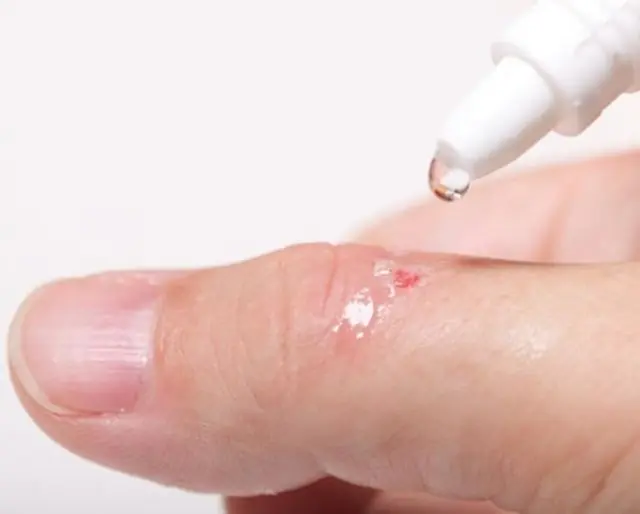
If the wound does not heal after removing the papilloma, you should urgently consult a doctor who, if necessary, will clean the formation and also recommend regenerating drugs.
The patient should also take a number of measures to prevent complications during wound healing:
- Under no circumstances should you tear off a partially detached scab;
- Avoid exposure to ultraviolet radiation on the wound, and after healing, apply sunscreen to the area;
- Avoid applying cosmetics and household chemicals to the wound;
- If possible, do not expose this area to mechanical stress - do not rub with a washcloth or even cosmetic brushes;
- In treatment, use only products prescribed by the doctor;
- If there has been an incident of long-term tissue regeneration after removal of papillomas, it is necessary to undergo regular preventive examinations with a dermatovenerologist.
When, after removal of the papilloma, the wound does not heal for a long time, a new growth may form under the crust. You should not hope to solve the problem on your own; you should immediately consult a doctor.
What to do if the wound does not heal after removal of the papilloma - watch the video:
The fact that the wound does not heal after papilloma is a very unpleasant phenomenon. However, if you consult a doctor in a timely manner, you will be able to minimize the risk of wound infection and avoid the appearance of scars. The correct procedures after removing papilloma will allow you to forget about unpleasant growths; not a trace will remain on the skin.
- Related article: How and how long does it take for a wound to heal after wart removal



